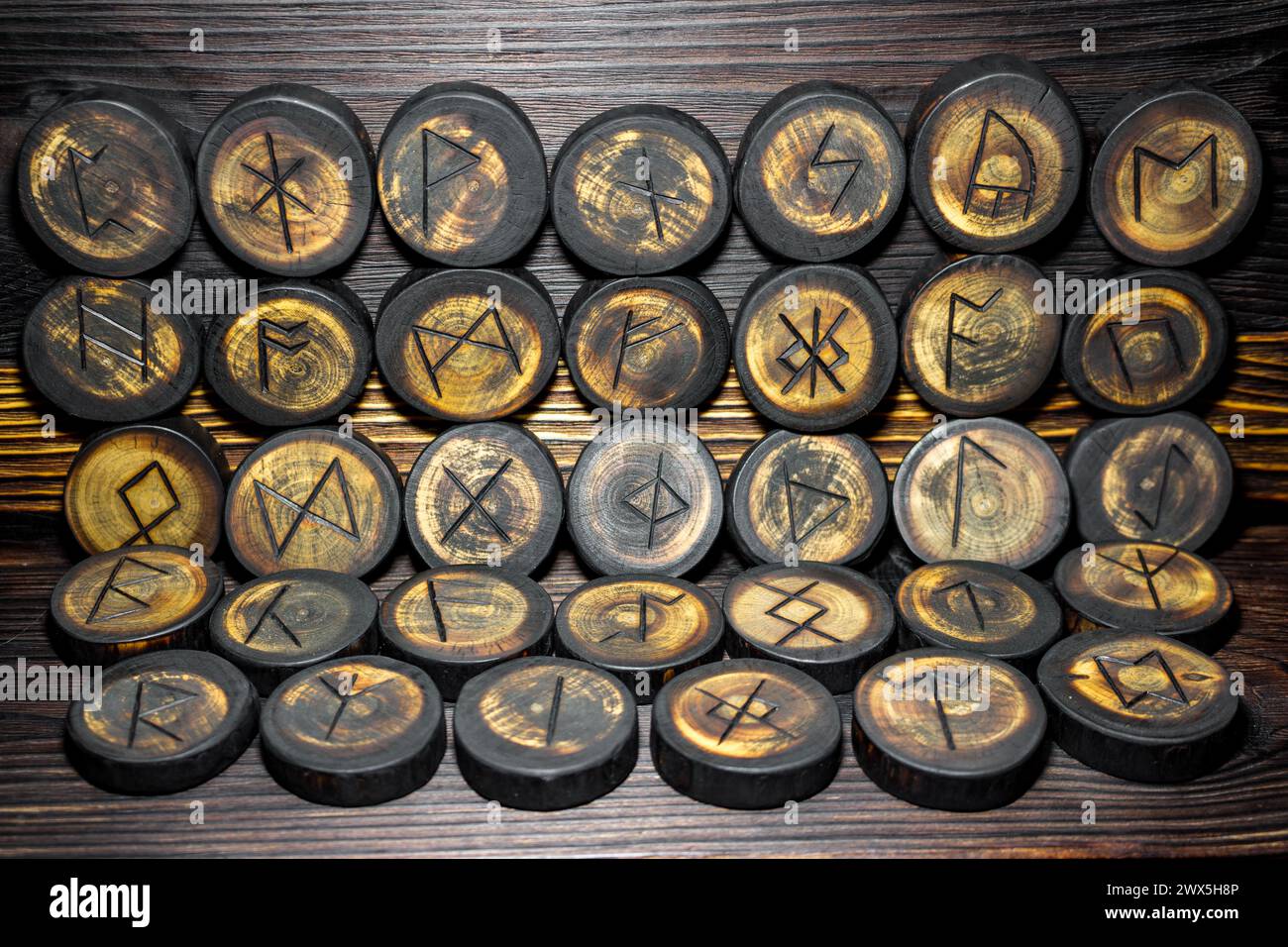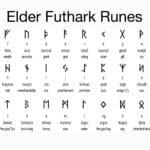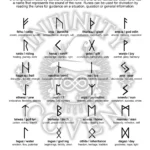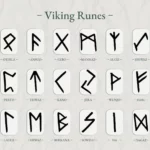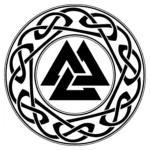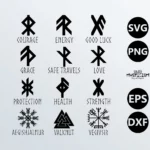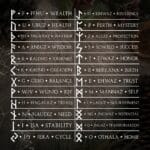Deciphering the Futhorc: An Ancient Alphabet
The Anglo-Saxon Futhorc runes, those intriguing symbols reminiscent of ancient lore, hold a captivating story. More than mere letters, they offer a glimpse into the language, culture, and beliefs of the Anglo-Saxons. This guide explores the Futhorc’s origins, evolution, and enduring legacy, unraveling the mysteries of these ancient characters.
Origins: A Scholarly Debate
The genesis of the Futhorc runes remains a subject of scholarly discussion. Some researchers suggest an origin in Frisia (present-day Netherlands and Germany), brought to Britain by Anglo-Saxon settlers. This theory posits a well-developed runic system prior to its arrival in Britain. Alternatively, some scholars propose an independent development within Anglo-Saxon England, citing unique rune shapes and potential links to earlier local scripts. A blended origin, with Frisian roots and subsequent Anglo-Saxon adaptations, is also plausible. Ongoing research continues to illuminate this fascinating puzzle.
Evolution: From Elder Futhark to Futhorc
The Anglo-Saxon Futhorc didn’t simply replicate its predecessor, the Elder Futhark. Old English, the Anglo-Saxon language, possessed distinct sounds requiring new runes to represent them. This expansion beyond the Elder Futhark’s 24 runes reflects a linguistic ingenuity born of necessity.
| Rune Set | Character Count | Key Differences |
|---|---|---|
| Elder Futhark | 24 | Used primarily for Proto-Norse, ancestral to Scandinavian languages. |
| Anglo-Saxon Futhorc | 26-33 | Adapted for Old English phonetics, featuring unique characters absent in the Elder Futhark. |
Variations: A Dynamic Script
The Futhorc wasn’t static; it evolved across regions and time periods. Rune shapes shifted, and the total number varied between 26 and 33. This dynamic nature complicates defining a single “Futhorc alphabet,” instead presenting a tapestry of variations reflecting the diversity of Anglo-Saxon culture.
Phonetics and Meanings: Decoding the Runes
Deciphering the Futhorc is a linguistic detective story. While many runes have established phonetic values and meanings, some, like “eo” (ᛇ) and “cweorð” (ᛢ), remain enigmatic. This ongoing quest adds to the allure of these ancient symbols. For a deeper exploration of artistic symbolism, consider Auguste Rodin Grubleren.
Usage: From Mundane to Mystical
Futhorc runes appeared on diverse objects, from everyday items to weapons and rings. Their purpose ranged from simple labels to potentially deeper symbolic, ritualistic, or magical applications.
Language Preservation: A Window to the Past
Before the Latin alphabet’s ascendancy, Futhorc served as a vital script for Old English and Old Frisian. These inscriptions provide invaluable insights into these Germanic languages and the development of modern English.
Decline and Replacement: The Rise of the Latin Alphabet
Several factors likely contributed to the Futhorc’s decline: the influence of the Church, growing European connections, and the increasing use of Latin in official and religious contexts.
Modern Revival: A Legacy Renewed
The Futhorc enjoys a modern resurgence, embraced by Pagan communities and studied by scholars. Online discussions, like “Futhorc 2.0,” explore its adaptation for contemporary English.
Exploring Deeper Meanings: Unfolding the Futhorc
The Futhorc runes are more than just an alphabet; they’re a gateway to understanding the Anglo-Saxons. Each rune is imbued with meaning, reflecting their culture, beliefs, and worldview. Derived from the Elder Futhark, the Futhorc expanded to encompass the unique sounds of Old English, growing from 24 to as many as 34 runes. The name “futhorc” itself derives from the first six runes: f, u, þ (thorn), o, r, c.
Each rune represents a sound (phoneme) and a symbolic concept, often linked to nature, daily life, or mythology. This duality adds depth and complexity to inscriptions. From everyday objects to formal documents, the presence of runes suggests their significance in communication, potential divination, and even magic.
| Rune | Name | Phonetic Value | Symbolic Meaning (Example) |
|---|---|---|---|
| ᚠ | feoh | f | wealth, cattle, prosperity |
| ᚢ | ur | u | aurochs (wild ox), strength, primal power |
| ᚦ | thorn | th | thorn, protection, defense, sometimes associated with giants |
| ᚩ | os | o | mouth, communication, speech, song, sometimes associated with the divine |
| ᚱ | rad | r | riding, journey, travel, both physical and spiritual |
| ᚳ | cen | c,k | torch, knowledge, illumination, guidance |
| … | … | … | … |
The Futhorc’s eventual decline in favor of the Latin alphabet marks a shift in linguistic landscapes. However, its legacy endures, with renewed modern interest in its history and symbolism. Ongoing research continues to unveil new insights into these captivating runes.
Pagan Runes: A Deeper Dive
The Anglo-Saxon Futhorc, adopted around the 5th century, evolved from the Elder Futhark to accommodate the unique sounds of Old English. More than just writing, each rune held symbolic weight within Anglo-Saxon paganism. Carved onto various objects, they served as potential invocations, charms, or tools for divination. The Futhorc’s structure varied regionally and chronologically, containing 26 to 33 runes, some with debated pronunciations.
| Rune | Name | Phonetic Value | Potential Meaning |
|---|---|---|---|
| ᚠ | feoh | f | cattle, wealth |
| ᚢ | ur | u | aurochs, strength |
| ᚦ | þorn | th | thorn, protection |
| … | … | … | … |
The Ruthwell Cross exemplifies the Futhorc’s use in religious contexts, while inscriptions on smaller objects reveal its everyday presence. The Latin alphabet’s eventual dominance, driven by Christianity’s influence, didn’t erase the Futhorc’s legacy. Its historical and spiritual significance remains a source of fascination today.
Viking vs. Anglo-Saxon Runes: A Family Resemblance
Viking and Anglo-Saxon runes, while sharing the Elder Futhark as a common ancestor, diverged in their evolution. The Anglo-Saxons expanded the Elder Futhark into the Futhorc, adding runes to represent the evolving sounds of Old English and Old Frisian. The Vikings, conversely, streamlined the Elder Futhark into the Younger Futhark.
| Feature | Elder Futhark | Futhorc | Younger Futhark |
|---|---|---|---|
| Rune Count | 24 | Up to 33 | Generally 16 |
| Languages | Proto-Norse | Old English, Old Frisian | Old Norse |
| Development | Ancestor | Expanded | Simplified |
The Futhorc’s unique characters, like ᛇ (eo), ᛢ (cweorð), and ᛥ (stan), distinguish it from the Younger Futhark. Even shared runes can exhibit variations in form and sound. Beyond their alphabetic function, runes held cultural significance as symbols of power, magic, and identity for both Vikings and Anglo-Saxons. Continued research promises to enrich our understanding of these ancient scripts.
- Unveiling the Enigma: Mansoureh Khojasteh Bagherzadeh’s Public Appearances & Private Life in Iran - July 18, 2025
- Unveiling the Mystery: Mansoureh Khojasteh Bagherzadeh’s Husband: A Rare Glimpse into a Private Life - July 18, 2025
- Unveiling Masoud Khamenei’s Mother: Power, Influence, and Iran’s Future - July 18, 2025
